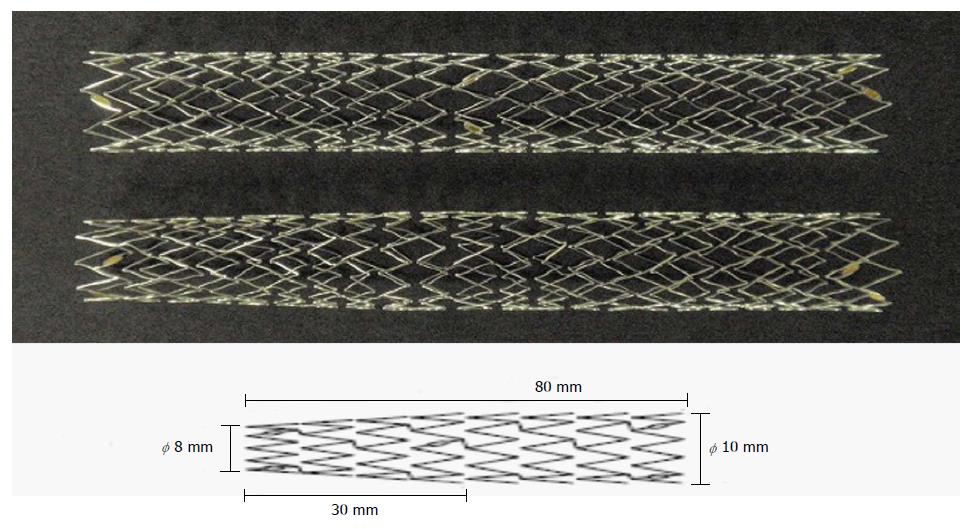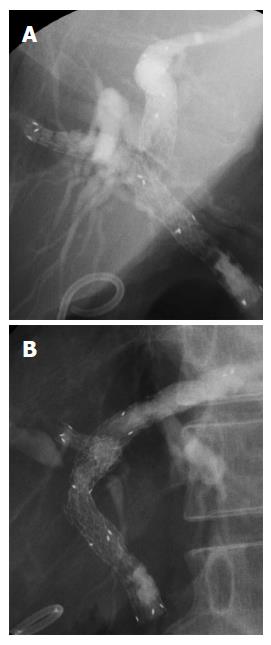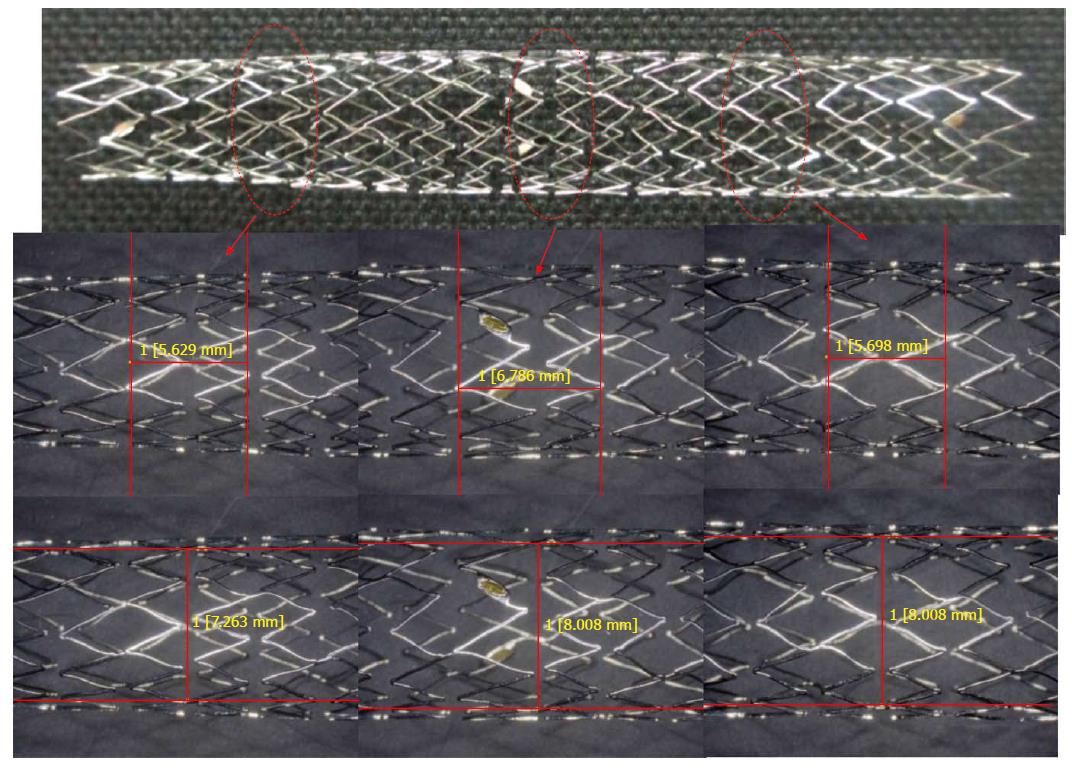Copyright
©The Author(s) 2015.
World J Clin Cases. Oct 16, 2015; 3(10): 887-893
Published online Oct 16, 2015. doi: 10.12998/wjcc.v3.i10.887
Published online Oct 16, 2015. doi: 10.12998/wjcc.v3.i10.887
Figure 1 The metallic stent at the top is the ordinary laser-cut uncovered metallic stent.
The one at the bottom is the laser-cut uncovered metallic stent (PIOLAX: Japan) created for exclusive use in the liver. This metallic stent is 8 cm in full size with a 3-cm tapered tip and a mesh space of 6-8 mm in the center of the stent; its internal diameter is 10 mm in the papillary side and 8 mm in the hepatic side.
Figure 2 New tapered metallic stent (fluoroscopic image).
A: Tapered laser-cut metallic stent placed in the liver. Stenting along the shape of the bile duct was possible (fluoroscopic image: front view); B: Fluoroscopic image: oblique view.
Figure 3 Laser-cut metallic stent with a comparatively large mesh space of about 6.
8 mm × 8.0 mm in the center.
- Citation: Sakai Y, Tsuyuguchi T, Nishikawa T, Sugiyama H, Sasaki R, Sakamoto D, Watanabe Y, Nakamura M, Yasui S, Mikata R, Yokosuka O. New tapered metallic stent for unresectable malignant hilar bile duct obstruction. World J Clin Cases 2015; 3(10): 887-893
- URL: https://www.wjgnet.com/2307-8960/full/v3/i10/887.htm
- DOI: https://dx.doi.org/10.12998/wjcc.v3.i10.887











